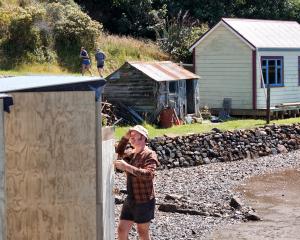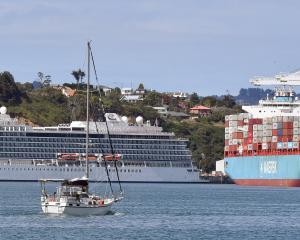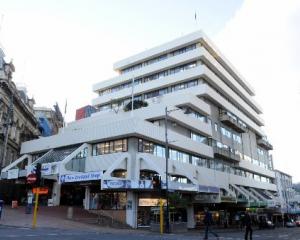More Dunedin commuters are shunning cars in favour of buses as rising fuel prices bite.
Bus patronage has risen dramatically and the number of cars on the road has dropped as Dunedin workers mirror a national trend and leave their cars at home.
However, locals may be leaving their northern counterparts in the dust.
Otago Regional Council director of policy and resource planning Fraser McRae said there had been "a significant increase" in passenger numbers on public transport services contracted to the council this year.
"There was a dip in June when students were away and the weather was nasty in July, but the figures are right back up to May levels.
"Our numbers show increases in patronage each month over previous recent months and this growth seems set to continue."
After the council introduced the "Go-card" system in November 2007, passengers have used bus services 883,194 times.
"We are already well ahead on the previous 12-month period. There has been a 74% increase over the past three years since bus services were reviewed and a 50% increase in use since June 2006."
Mr McRae attributed the increased patronage to rising fuel costs, and more "usable services".
"We believe the Go-card has been a resounding success, and there has been a good response to the increased frequency and reliability of services - we have put on 125 new services in past three years, and most of those in past eight months," he said.
This trend is backed by Dunedin City Council data showing more people left their cars at home.
Daily traffic counts at major intersections showed drops of about 4%-11% from March to June, compared with the corresponding period last year, apart from a small spike in April.
Council transportation planning manager Don Hill yesterday encouraged people to continue the trend.
Fewer vehicles on roads meant networks were more efficient and emissions reduced.
The council promoted the use of bus services and car pooling.
If the number of vehicles on the road continued to drop it might delay the need for some roading projects.
However, Mr Hill warned vehicle numbers tended to climb again once the initial shock of increased fuel costs wore off.
Traffic growth had been the pattern nationally over the past 50 years.
The number of vehicles travelling daily through the Andersons Bay Rd/Southern Motorway intersection dropped 4% in March compared with the previous March.
April figures were 1% up, May 3% down and June 7% down.
About 1.1 million vehicles usually travel through this intersection in a month.
At the Portsmouth Dr/Strathallan St intersection traffic numbers were down 11% in March, up 3% in April, down 7% in May and 4% in June.
For the Stuart St/London St intersection, there was a 9% drop in March, a 5% rise in April, a 6% drop in May and a 3% drop in June.
Mosgiel traffic counts had remained more static.
Mr Hill was unsure why the city vehicle count had risen in April.
Feedback from motorists indicated they had noticed it was easier to negotiate busy intersections, with flows down to levels of two or three years ago.
The Government's transport agency figures show public transport patronage is higher than at any time since 1989.
New Zealand Transport Agency regional network manager Murray Clarke, of Dunedin, said the authority's figures showed a 4% reduction in road use on two local main highways it monitored in the past year.
Figures from a monitoring station just north of Pine Hill on Dunedin's Northern Motorway showed on average 6000 vehicles used the road each day.
About 27,000 vehicles daily passed a monitoring station at Burnside on Dunedin's Southern Motorway in 2007-08.
The Auckland Regional Transport Authority recorded a 4.4% rise in public transport patronage for 12-month period until June, The New Zealand Herald reported this week.
- Sam Stevens and Andrea Jones












